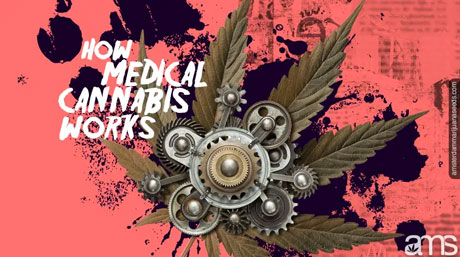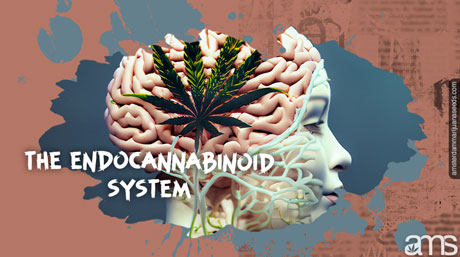 By:
Amos Mwaniki
By:
Amos Mwaniki
Discover the science behind medical cannabis and its therapeutic potential. Learn how it works and why it’s chosen by many for health reasons.
A good way to wind down? A gateway substance? Or so much more?
Whether you’re 420-friendly or not, the perception of marijuana as a recreational drug, glosses over its immense historic, of cultural, and medicinal significance.
In fact, the history of medical cannabis spans millennia, with its earliest confirmed use dating to 400AD. Scholars think this goes back further to ancient China, India, and Persia when it was used for pain relieving, soporific, and aphrodisiac qualities.

Most countries only outlawed cannabis recently, but two hundred years of criminalization harmed research by making cannabis impossible to access and study.
Thankfully, the transition back from vilified substance to a healing plant is well underway. Scientific opinion, public perception, and laws have all shifted, and the scale of medical research has exploded in the last few years.
With our obvious excitement to make up for lost time, it’s crucial for cannabis and the research surrounding it to be transparent, high-quality, and unbiased. After all, you have a right to be informed about how marijuana could reshape healthcare.
How does it work? Could it help you? Which medical conditions can it be used for? What are the downsides?
Let’s take a good look at what science says.
What is the effect of cannabis on the body?
Each of us has a vast network of nerves, receptors, and chemical transmitters in our body called the endocannabinoid system, or ECS, for short.
The ECS is known to regulate a whole range of vital bodily functions, from mood, learning, and memory to immune system function, pain perception, and inflammation.
Even if you don’t use marijuana, our bodies naturally produce endocannabinoids, which act as chemical signals in the ECS. They do this by activating cannabinoid receptors dotted around the brain and body. It is thought that some of the most challenging chronic pain conditions such as IBS, fibromyalgia, and migraines are related to a deficiency in endocannabinoids.
No prize for guessing where we can find more. Yes, over 100 phytocannabinoids such as THC and CBD occur naturally in the Cannabis sativa plant. Terpenes are also found in marijuana. These aromatic compounds give bud its oh-so-distinctive smell, flavor, and color. Some terpenes have antimicrobial, antifungal, and even anti-cancer properties, and may synergize with cannabinoids to enhance their medicinal properties.
Like our own endocannabinoids, THC, CBD, and others interact with cannabinoid receptors and could be the key to a better understanding of many medical conditions.
So, with that science lesson over, let’s look at where the research stands currently.

Unfortunately, solid scientific evidence for the health effects of cannabinoids is scarce at the moment, but new research is always ongoing. That’s not to say that many people around the world don’t find relief from using cannabis and cannabinoid products, but this is yet to be replicated in well-designed, unbiased clinical trials.
One of the main reasons for this is that legislation and regulations have limited medical research. Underfunding and marijuana supply issues make it difficult for researchers to get the quantity, grade, and kind of marijuana product required for high-quality studies.
The result is that patients, healthcare providers, and policymakers are left without the information to make decisions about the use of weed as a medicinal product.

Another problem is that clinical research finds it hard to replicate the subtle nuances of real-world weed use and users. marijuana comes in dozens of forms and there’s a wide spectrum of ways to take it. Even within smoking, there’s a variety of devices, from the humble joint to ornate dab rigs. What this means is that it can be hard to ensure standard dosing. Some researchers have even tried to design standardized smoking techniques to get around this. Another option is to use isolated cannabinoids which offer a more precise dose but could mean that we are missing out on what the full plant has to offer, including other cannabinoids, terpenes, and flavonoids.
Our best bet in looking for the benefits of medical cannabis is to look at systematic reviews and meta-analyses. These are special studies that aggregate the findings of hundreds of trials to assess for any beneficial outcomes.
Let’s look at what evidence they can show us.
Recent studies have examined the health effects of cannabinoids in dozens of different medical conditions. Of these, researchers found that only chronic non-cancer pain, nausea and vomiting, epilepsy, and multiple sclerosis had been the focus of high-quality reviews.
Overall, there is moderate evidence that cannabinoids are safe and can provide relief in chronic non-cancer-related pain. Dronabinol and nabiximols were found to have good-quality evidence for this purpose. Nabilone has also been found to have an effect, however, the studies were low in quality.
Epilepsy has one of the strongest evidence bases for cannabis. The use of cannabinoids as an anticonvulsant agent was first reported in 1843. Much of the evidence is high quality and shows that CBD is linked to a decrease in seizure frequency, particularly in patients with Lennox-Gastaut syndrome and Dravet syndrome. It is also important to mention the risk that cannabinoids can aggravate seizures and affect how other epilepsy drugs work.
Both conditions can be associated with a painful increase in muscle tone and stiffness, known as spasticity. Several reviews have reported a significant effect favoring the use of cannabinoids for spasticity, especially in MS. Even so, the quality of evidence is not strong, and the results are not consistently positive.
Early lab studies have shown that cannabinoids and other compounds may have some anti-cancer properties, but it is not yet a proven or recommended treatment for cancer. However, medical cannabis can be used to treat symptoms associated with cancer and its treatment. Nausea and vomiting from chemotherapy are common and distressing, and there is some evidence suggesting that the cannabinoids dronabinol and nabilone can provide relief. One analysis found that cannabinoids controlled symptoms in one-third to half of the patients taking them, outperforming placebo and other anti-nausea drugs.
Some evidence suggests that cannabis can treat glaucoma, which is a build-up of pressure in the eye that can damage the optic nerve. However, the effects, if any, are temporary. So, to have a meaningful effect on glaucoma, you would need to take up a dose of THC equivalent to an average edible, 6-8 times a day! In some studies, CBD and nabiximols even led to an increase in eye pressure.
Just like any other medicine, the effect of marijuana on the body isn’t always desirable. Some (but not all) studies have linked weed to a range of health issues, including lung and cardiovascular disease, low fertility, and psychiatric effects. It’s important to discuss your medical history with your physician or healthcare provider before using medical marijuana.

There are several qualifying medical conditions for cannabis, but these vary depending on where you live. The most common qualifying medical conditions in the US and Europe are:
Talk to your healthcare provider if you feel medical cannabis could help you.

Does this ancient medicine hold the key to better medical care?
Understandably, those with hard-to-treat and poorly understood medical conditions are hopeful for the impact that medical cannabis could have on their lives. There are promising signs that weed could revolutionize the treatment of conditions like epilepsy and chronic pain.
Unfortunately, while there is a lot of material out there, the standard of evidence isn’t high enough for medical marijuana to be accepted into the mainstream just yet.
With that said, it’s still early days for marijuana research, and improved evidence will be available in the future. Continue to watch this space.
This content is meant for educational purposes only. It has been compiled with research from external sources. it is not meant to substitute any medical or legal advice. Please see your local laws for the legality of marijuana use.













Related Posts

In this article, we will examine the science behind CBD’s alleged relaxation-enhancing properties.

The endocannabinoid system (ECS) is a pivotal biological network within the human body, vital for maintaining homeostasis across various physiological functions. It’s comprised of endocannabinoids, enzymes, and receptors. This system influences everything from sleep, mood, appetite, memory, reproduction, and even our immune response.
When you consume marijuana, the plant’s cannabinoids, THC and CBD, interact with your ECS in significant ways…

The landscape of medical marijuana is rapidly changing not just in the Western world, but also in Eastern Europe.